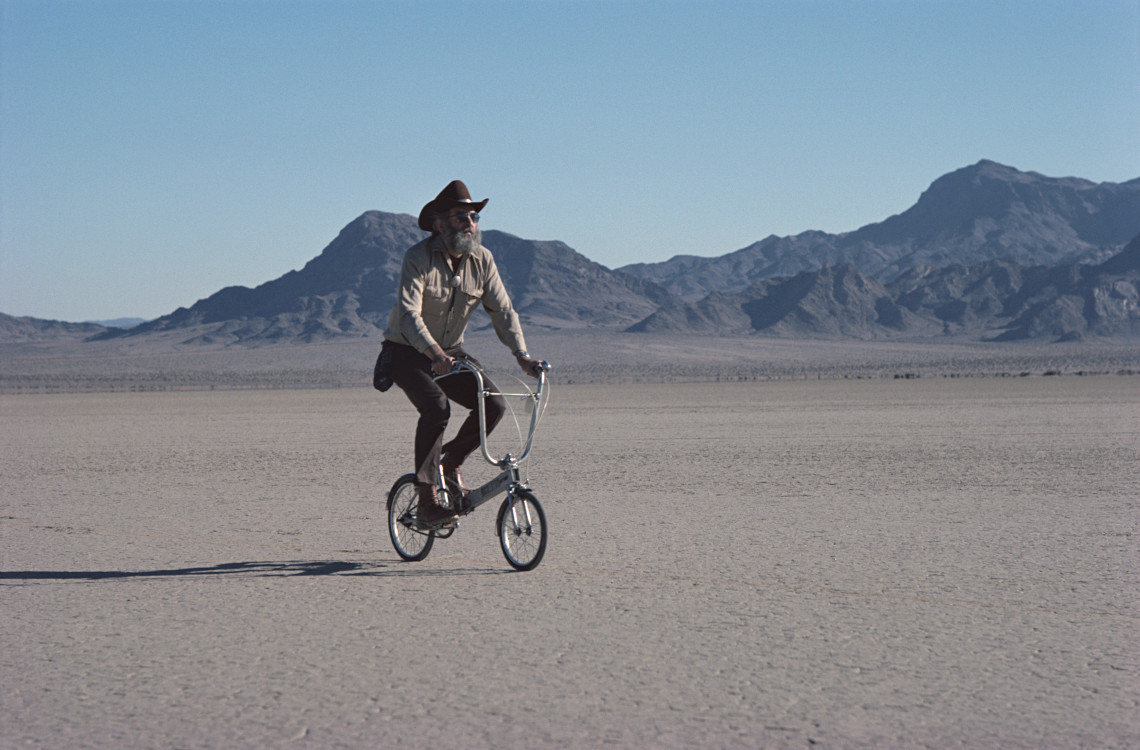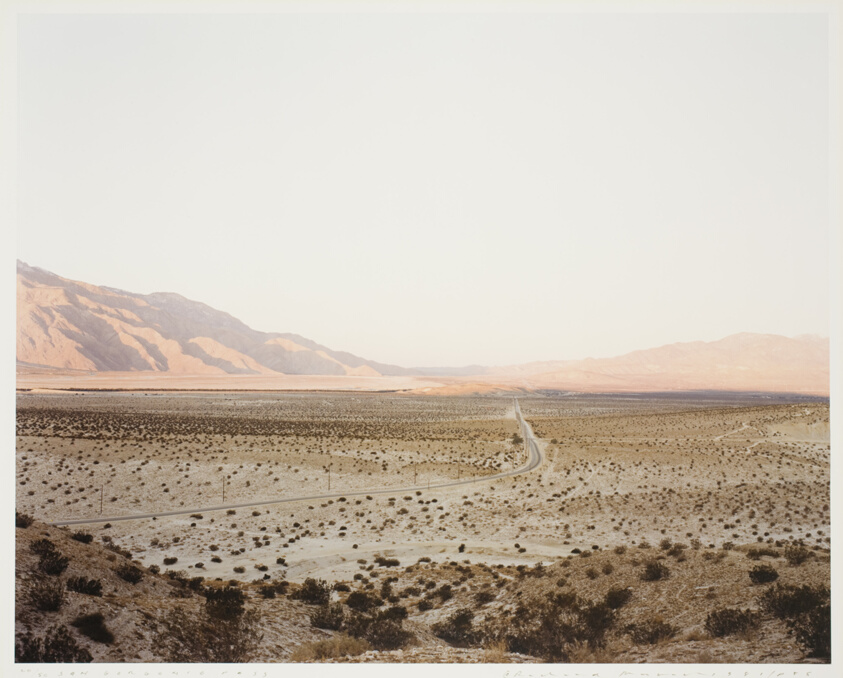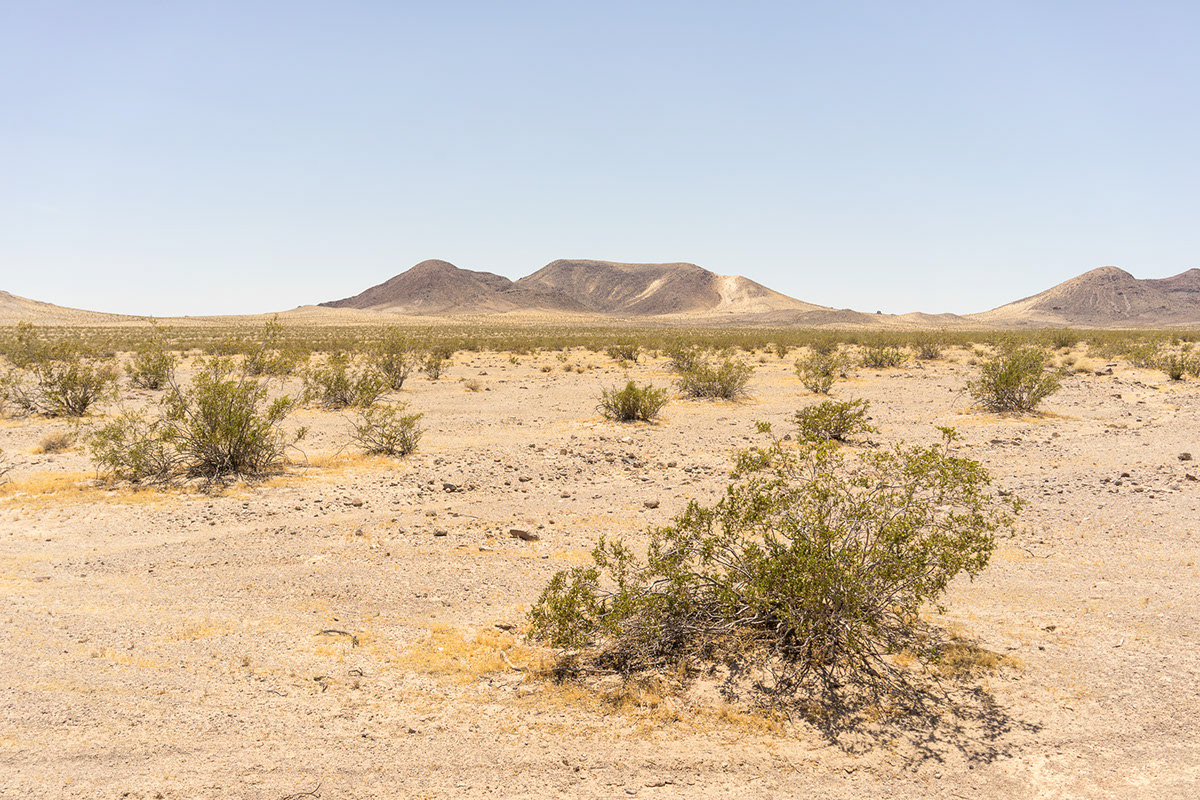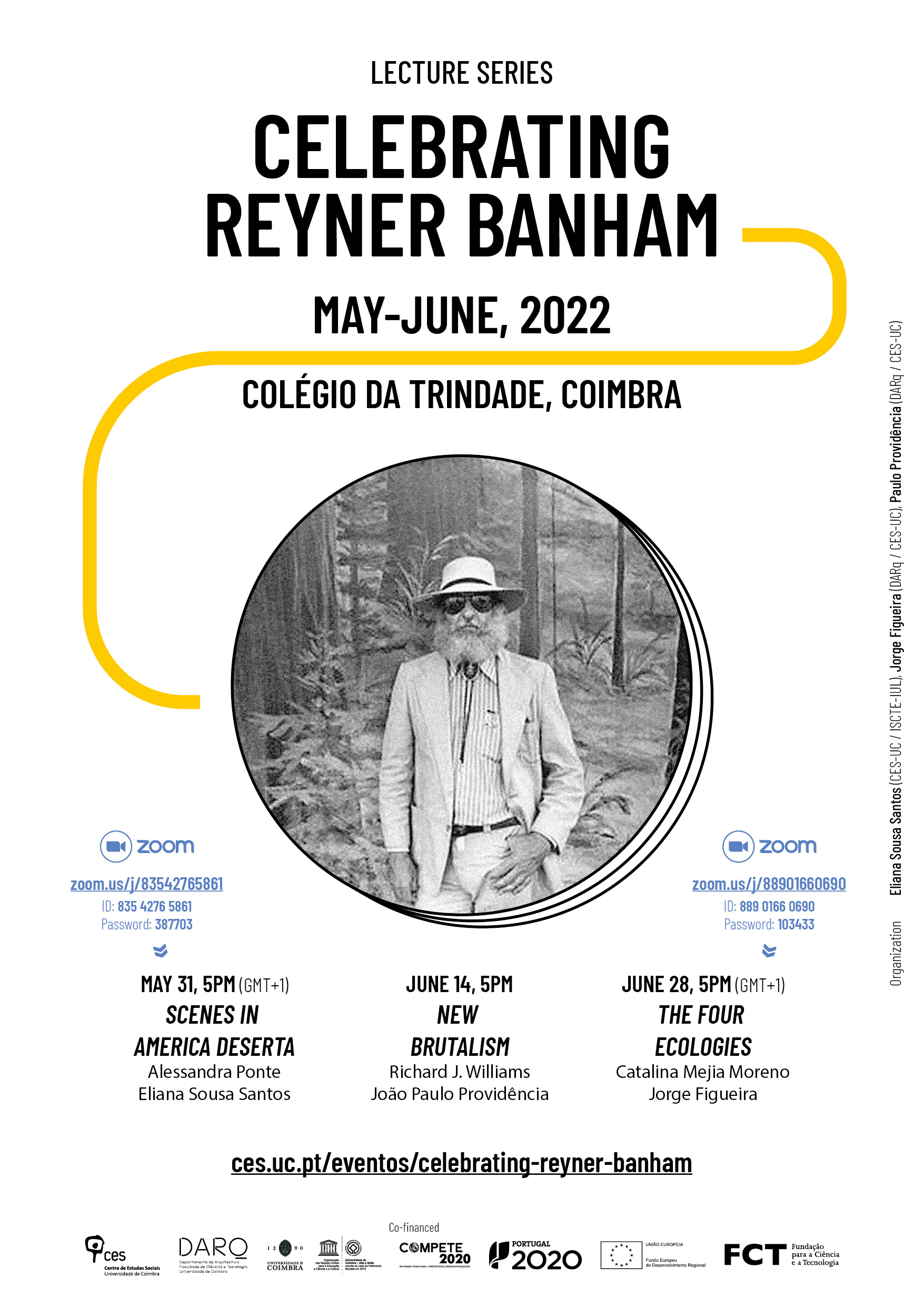Lecture
Celebrating Reyner Banham I / Scenes in America Deserta
Alessandra Ponte
Eliana Sousa Santos
May 31, 2022, 17h00 (GMT+1)
Online
About
Eliana Sousa Santos, Jorge Figueira and Paulo Providência, CES researchers, by occasion of the centenary of the birth of Reyner Banham, promote a series of conferences centred on three aspects of the important British critic's work. The first lecture, focusing on Scenes in America Deserta and the landscapes of Reyner Banham, will have as speakers Alessandra Ponte (Two or three questions I had about Banham: Scenes in America Deserta re-visited) and Eliana Sousa Santos (Scenes in America Deserta).
This activity will be provided through Zoom platform and does not require registration. Participation is limited to the number of places available.> https://us02web.zoom.us/j/83542765861?pwd=RmZkVHNXQXdJb2haTDNjMVNzWDVSUT09 | ID: 835 4276 5861 | Password: 387703
Scenes in America Deserta
Scenes in America Deserta (1983), Reyner Banham’s account of his travels in the American desert, is a peculiar book within his body of work, since it is mainly inspired by travel literature and memoir.
If in the beginning of his journey, Banham was still secretly hoping to find the desert devoid of attached references, after some reflection he could not help but admit the myriad of references that informed his views. He had already seen works of art and read accounts about the desert presenting the sites he was seeing, or trying to see.
For Banham, the ultimate example reference for the American desert — beyond westerns and land art — was The Desert (1901) by the art historian John Van Dyke. Van Dyke’s book had the particular quality of showing the desert as a place full of abstract visual qualities. Banham wrote a review about a reprint edition of the book where he remarked that the renewed interest in the book might have had the wrong reasons, the reprinting of the The Desert was made “on currently conventional eco-conservationist grounds” but the book was, on the contrary, remarkable by its descriptions of colours and atmospheres.
The precision with which Van Dyke described the colours and textures, of both air and ground in the desert, made a profound mark on Banham as one can see in the descriptions of his travel notes where he arduously searched for the right term and colour gradients: “Sun at left (2.30-3.30) very deep blue/purple shadows at either side of mountains to left. Snow-covered peaks above dark brown mesas to right.”
Images

1. Reyner Banham cycling on Silurian Dry Lake (1981), Tim Street Porter

2. San Gorgonio Pass (1981), Richard Misrach

3. At the end of Rasor Road - After Reyner Banham (2017), Tiago Silva Nunes
Bio notes
Alessandra Ponte is Full Professor at the University of Montreal, Canada. A PhD from the IUAV with Manfreto Taffuri, Ponte has written on landscape issues, from Uvedale Price to the mining landscapes of northern Canada. Her collection of texts "The House of Light and Enthropy" was published by the prestigious publisher Architectural Association, 2014, AA School, London.
Eliana Sousa Santos is an architect, researcher and lecturer. In 2017, she won the twelfth edition of the Fernando Távora Prize. She curated the exhibition A Forma Chã (Gulbenkian Museum), an associated project of the Lisbon Architecture Triennale 2016. She was a post-doctoral visiting fellow at Yale University in 2013/14. Researcher at CES, University of Coimbra with the project "George Kubler's Shape of Time: The Historiographical effect of Portuguese Plain Architecture in Post- revolutionary Portugal". She has a degree in architecture from the Technical University of Lisbon, a master's degree from the University of Coimbra and a PhD from the University of London. She is visiting assistant professor at the Department of Architecture and Urbanism of ISCTE-IUL.


